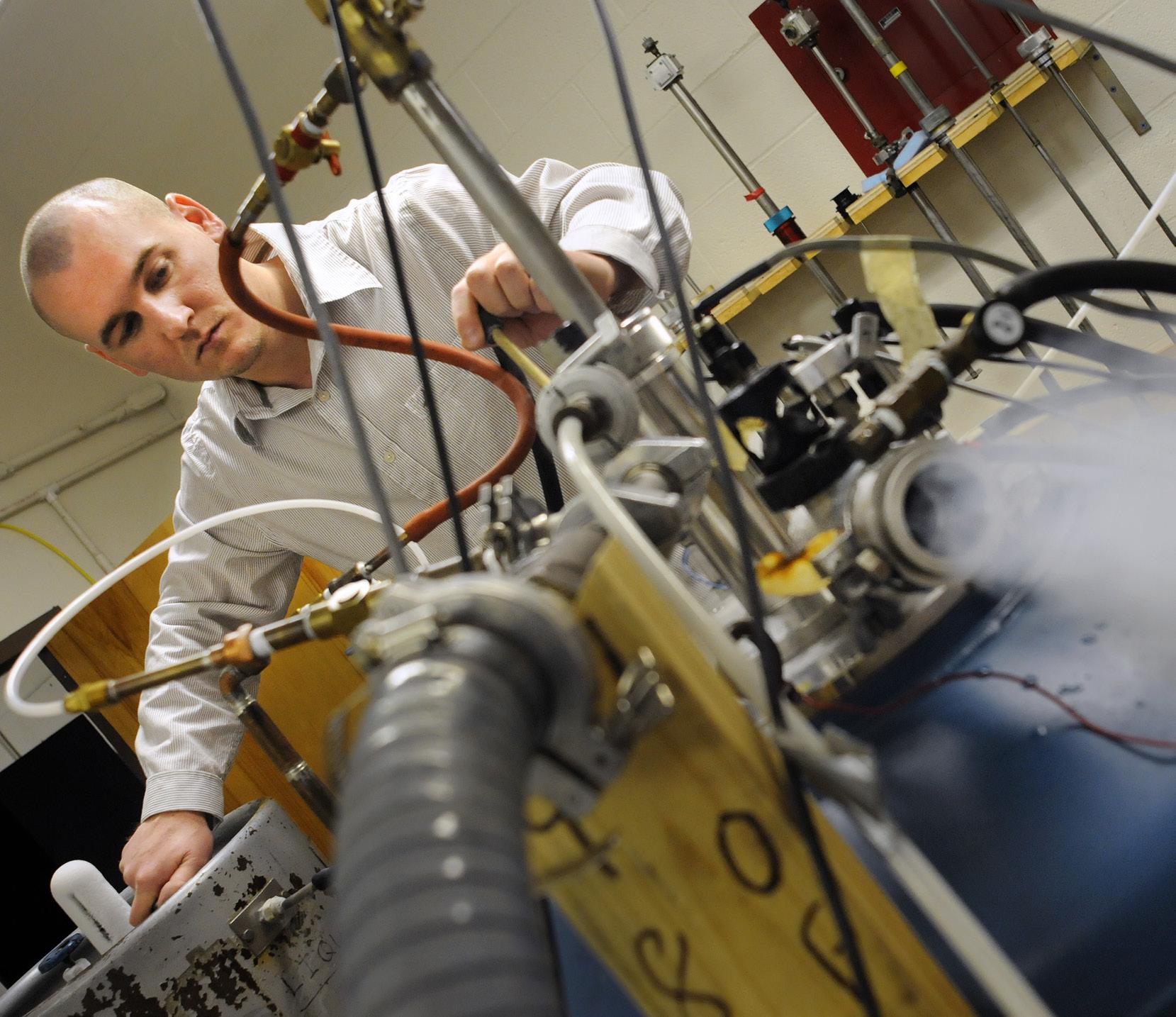The UK Department of Physics and Astronomy currently has 30 regular and 7 active adjunct and/or emeritus faculty members, 11 post-doctoral researchers, 11 office, technical, and instructional staff members, 91 graduate students and 83 undergraduate physics majors. The Department offers courses and research opportunities leading to the M.S. and Ph.D. degrees in the areas of astronomy and astrophysics (theoretical and observational), atomic and molecular physics (experimental), nuclear/particle physics (theoretical and experimental), high energy physics (theoretical), and condensed matter physics (theoretical and experimental). More detailed descriptions of each of these options is available at https://pa.as.uky.edu/pa-faculty-research .
 Excellent laboratory facilities and library materials are available. Major experimental facilities located within the Department are the 6 MeV Van de Graaff accelerator and the Center for Advanced Materials. The Department is active in research at many national laboratories, including Jefferson Lab (Virginia), Oak Ridge National Lab (Tennessee), Los Alamos National Lab (New Mexico), Argonne National Lab. (Illinois), Brookhaven National Lab (New York), Triangle Universities Nuclear Lab (North Carolina), National High Magnetic Field Facility (Florida), and Lawrence Berkeley Lab (California) as well as international laboratories including Paul Scherrer Institute (Switzerland), TRIUMF (Vancouver), and MAX-lab (Sweden). In astronomy our students are conducting research at facilities including the orbital missions such as the Hubble Space Telescope, the Neil Gehrels Swift gamma-ray Observatory, and the Chandra, X-Ray Observatory, and ground based radio telescopes including the Very Large Array (New Mexico), Arecibo Observatory (Puerto Rico), and the Robert C. Byrd Green Bank Telescope (West Virginia), Kitt Peak National Observatory (Arizona), McDonald Observatory (Texas), as well as the ground-based optical Sloan Digital Sky Survey. Such activities expose our graduate students to both state-of-the-art instrumentation and world-class researchers.
Excellent laboratory facilities and library materials are available. Major experimental facilities located within the Department are the 6 MeV Van de Graaff accelerator and the Center for Advanced Materials. The Department is active in research at many national laboratories, including Jefferson Lab (Virginia), Oak Ridge National Lab (Tennessee), Los Alamos National Lab (New Mexico), Argonne National Lab. (Illinois), Brookhaven National Lab (New York), Triangle Universities Nuclear Lab (North Carolina), National High Magnetic Field Facility (Florida), and Lawrence Berkeley Lab (California) as well as international laboratories including Paul Scherrer Institute (Switzerland), TRIUMF (Vancouver), and MAX-lab (Sweden). In astronomy our students are conducting research at facilities including the orbital missions such as the Hubble Space Telescope, the Neil Gehrels Swift gamma-ray Observatory, and the Chandra, X-Ray Observatory, and ground based radio telescopes including the Very Large Array (New Mexico), Arecibo Observatory (Puerto Rico), and the Robert C. Byrd Green Bank Telescope (West Virginia), Kitt Peak National Observatory (Arizona), McDonald Observatory (Texas), as well as the ground-based optical Sloan Digital Sky Survey. Such activities expose our graduate students to both state-of-the-art instrumentation and world-class researchers.
